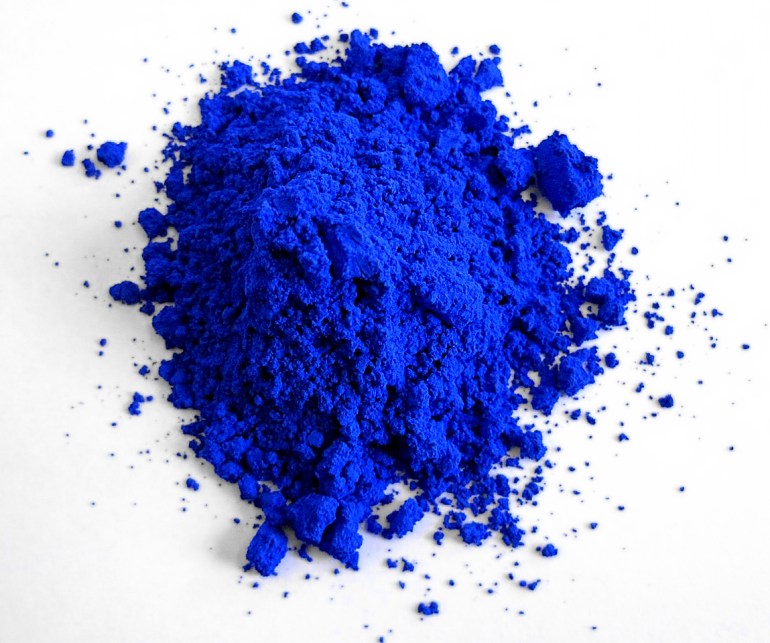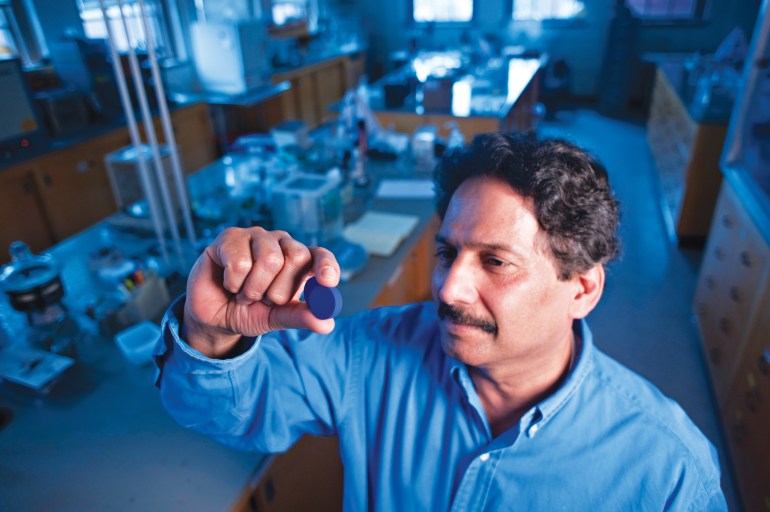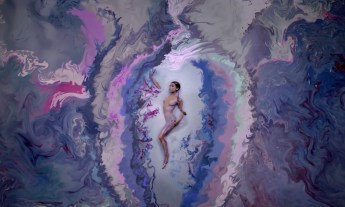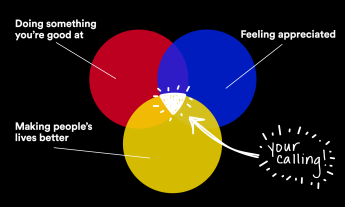
When the last blue pigment was discovered, Thomas Jefferson was in the White House. The recent creation of YInMn blue is a thrilling tale complete with expletives, accidents and invisible abilities. Just ask chemist and materials scientist Mas Subramanian.
There are no new colors in the world to be discovered — at least that’s what anyone who’s ever shopped for paint might think. At hardware and home stores, you can find swatches and cards with every subtle inflection of ROYGBIV (and white and black and brown and more). And if you still can’t find the shade you’re looking for, just show the paint person a photo or chip and they’ll stir up a custom batch for you.
But discovering a new pigment — now that’s an entirely different and rarer occurrence, especially when it comes to blue.
First, a little science! Color can be created in two ways: as the result of light, or as the result of using a pigment. Even though people often use the words “pigment” and “color” interchangeably, that’s not quite accurate. A pigment is a physical thing or a material, which is often an insoluble solid that can be suspended in a liquid. However, “when you see the color blue in nature, it is usually not due to a pigment,” says chemist Mas Subramanian (TEDxSalem Talk: A new color comes from out of the blue). For example, a person’s eyes or a butterfly’s wings appear blue because they reflect a specific wavelength of light on the visible light spectrum, but neither the eyes nor the wings actually contains a blue pigment. (Neither does a bright blue sky.)

In our age of custom paint mixers, you might assume we can turn any color into a pigment. But the mechanisms behind it are highly complex; scientists don’t have an algorithm or rulebook for predicting what color a chemical compound will turn out to be. “It looks very simple, but if you change the chemical composition or the crystal structure slightly, it will change the color,” says Subramanian. “It’s a trial-and-error method from intuition. We can’t predict the color of a compound before we make it in the lab.”
Dating back some 6,000 years, the earliest blue pigment is thought to be ultramarine. It’s made from pulverized lapis lazuli, a blue metamorphic rock that’s mined in Afghanistan, Russia, Chile and elsewhere. Between 2,000 and 3,000 BC, the Egyptians created what is believed to be the first synthetic pigment: calcium copper tetrasilicate, or what’s now called Egyptian blue, a turquoise shade made by heating sand, copper and other compounds together to 800 C – 900 C. Those two blue pigments stood alone until Prussian blue (oxidized ferrous ferrocyanide salts) was made in 1704, followed by cobalt blue (cobalt[II] oxide-aluminium oxide) in 1802.
Then, more than two centuries elapsed until the fifth blue pigment was created — by accident. Its origin story began when Oregon State University materials-science professor Subramanian received a grant from the National Science Foundation to design a compound to revolutionize — or so he hoped — the computer industry. This “holy grail” material for electronics would act as both a capacitor to store energy and as a magnet to store information, allowing data processing and quantum computing at never-before-reached speeds. Subramanian searched for elements that contained the energy and information storage properties he wanted, and he chose four: yttrium, indium, manganese and oxygen. “We thought that yttrium indium oxide would act as a capacitor, and manganese oxide as a magnet,” he explains. The elements were mixed together and placed in the furnace in his lab to be heated at 2,200 degrees Fahrenheit for 12 hours.

The next day, Subramanian walked into the lab to find a baffling concoction. He recalls asking a graduate student, “What the **** happened here?” As they peered down at the substance removed from the furnace, they were dumbstruck. It was blue — but unlike any blue they’d seen before. “I was shocked. In my 40 years of doing research, I’ve never seen manganese oxide produce blue,” he says. “Manganese compounds are normally black or brown.” Initially, Subramanian (shown, above, with the new pigment) thought a graduate student had made a mistake. Perhaps the mixture was contaminated? Or a sample had been mislabeled? But after repeating the experiment several times, they realized there hadn’t been a scientific flub. Prior to OSU, Subramanian had spent nearly three decades at DuPont working with almost every solid material (and garnering a total of 54 patents in the process). Although he’d never dabbled in pigment creation, he was familiar with the pigments that already existed, and he filed a patent for his discovery.
This manganese blue pigment was dubbed YInMn blue. While it’s certainly striking, its most fascinating feature can’t be seen by our eyes. Infrared rays — which are just beyond visible light on the electromagnetic spectrum — are invisible to humans but are felt by us as heat. YInMn blue reflects infrared waves, which means it deflects heat. And it’s good at it. In fact, the YInMn blue pigment reflects about 80 percent of what a white pigment can reflect, which makes it the only blue pigment with this special ability. Subramanian chalks it up to the interaction among the pigment’s constituents.
Because of the new pigment’s cooling property and its radiant color, companies across different industries — including Chanel, HP, Merck and Nike — were all interested in it. In 2015, an exclusive license was granted to Shepherd Color Company, which decided the most apt function for YInMn blue would be in industrial coatings for roofs and siding, which could lead to greater energy efficiency; the product went to market in 2017 after receiving approval from the US Environmental Protection Agency. The color has reached into the lives and hands of everyday customers, too. In 2017, Crayola created a crayon in honor of YInMn blue called Bluetiful. While it doesn’t actually contain the pigment, the new crayon aims to get children interested in STEM by publicizing the connection between scientific discovery and color.
Unfortunately, this blue pigment comes with a high price tag. That’s due to indium’s limited supply, high demand, lack of producers and refiners, and purity requirements. Shepherd is experimenting with cheaper dilutions of YInMn blue in an effort to maintain both its color and its heat-deflecting properties. People can also mix other colored paints to achieve a similar hue.
Subramanian has caught the pigment bug. He has found he can produce different variations on YInMn blue by increasing or decreasing the concentration of manganese, and he’s also trying to invent new pigments. So far, his lab has created orange, green and purple pigments using elements such as copper, iron, manganese and titanium. Now, he is focused on making a non-toxic red pigment, especially desirable because most reds contain harmful elements like cadmium, mercury and lead. However, he hasn’t given up on the multifunctional material for hardware that led to YInMn blue; he recently published a paper about his team’s research. “We started to make a compound that would revolutionize the electronics industry but it ended up being in the crayon, or it can be on our home, or it can be on your car,” he says. “I tell my students you have to be prepared to expect the unexpected.” In other words, the blue — er, sky — is the limit when it comes to what you might discover.
Watch Mas Subramanian’s TEDxSalem Talk here:



















